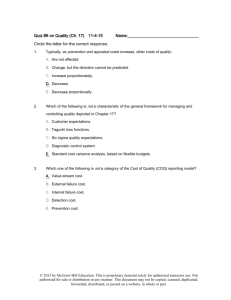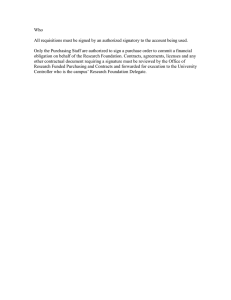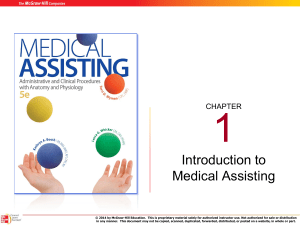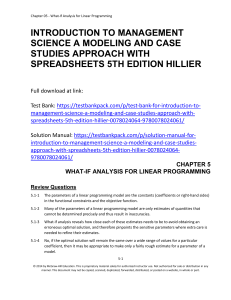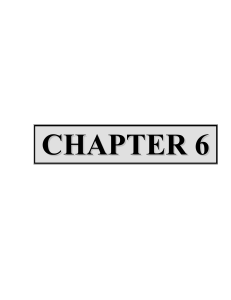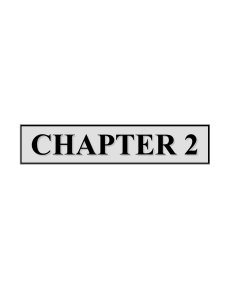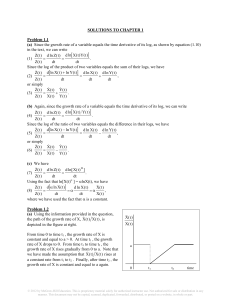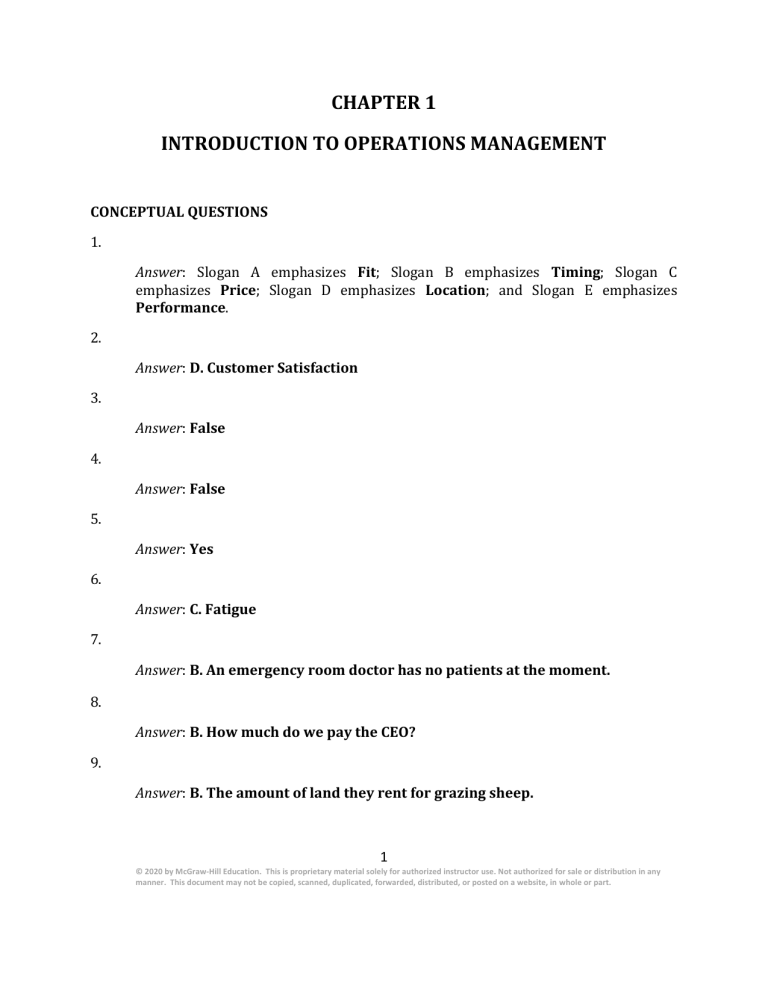
CHAPTER 1 INTRODUCTION TO OPERATIONS MANAGEMENT CONCEPTUAL QUESTIONS 1. Answer: Slogan A emphasizes Fit; Slogan B emphasizes Timing; Slogan C emphasizes Price; Slogan D emphasizes Location; and Slogan E emphasizes Performance. 2. Answer: D. Customer Satisfaction 3. Answer: False 4. Answer: False 5. Answer: Yes 6. Answer: C. Fatigue 7. Answer: B. An emergency room doctor has no patients at the moment. 8. Answer: B. How much do we pay the CEO? 9. Answer: B. The amount of land they rent for grazing sheep. 1 © 2020 by McGraw-Hill Education. This is proprietary material solely for authorized instructor use. Not authorized for sale or distribution in any manner. This document may not be copied, scanned, duplicated, forwarded, distributed, or posted on a website, in whole or part. PROBLEMS AND APPLICATIONS 1. Answer: C. Location and Time 2. Answer: B. Fit. Feedback: Fit is a subcomponent of the consumption utility that captures how well the product or service matches with the unique characteristics of a given consumer. 3. Answer: A. Performance. Feedback: Performance is a subcomponent of the consumption utility that captures how much an average consumer desires a product or service. 4. Answer: D. Timing. Feedback: The "to-go" section is designed for customers to purchase food quickly and move on their way to their departure gate. The primary focus is on the speed of service, which addresses the timing element of the customer utility function. 5. Answer: A. Performance. Feedback: The "special edition" coupe has features that give it a higher level of performance compared to the standard model. As a result, the "special edition" vehicle clearly emphasizes the performance dimension of the customer utility function. 6. Answer: Hotels B, C, and D. Feedback: The only hotel that is Pareto dominated is hotel A - all other are on the efficient frontier. Hotel A is Pareto dominated by hotel B, as B is both cheaper and better. 2 © 2020 by McGraw-Hill Education. This is proprietary material solely for authorized instructor use. Not authorized for sale or distribution in any manner. This document may not be copied, scanned, duplicated, forwarded, distributed, or posted on a website, in whole or part. 7. Answer: Carriers A, B, and C. Feedback: Carrier D is the only one not on the efficient frontier because it is dominated by Carrier A on both measures. 8. Answer: Dry Cleaner B. Feedback: Dry Cleaner B is the only one not on the efficient frontier because it is dominated by both Dry Cleaner A and C on both measures. 9. Answer: C. Empty bottles. Feedback: The bottle is a part of the soft drink product. 10. Answer: B. Bottling machines. Feedback: The bottling machine is a resource used to manufacture the soft drinks. The other items are inputs and are part of the product. 11. Answer: C. Feedback: The only item in the list that is a material used in the doctor's office operations is a needle. The rest of the items would be considered resources. 12. Answer: B. Feedback: The only item in the list that is used to transform inputs to outputs is the projector. The rest of the items in the list would be classified as inputs because they are materials and supplies used in the operations. 13. Answer: D. 3 © 2020 by McGraw-Hill Education. This is proprietary material solely for authorized instructor use. Not authorized for sale or distribution in any manner. This document may not be copied, scanned, duplicated, forwarded, distributed, or posted on a website, in whole or part. Feedback: Employee work schedules set a week in advance 14. Answer: C. Feedback: Customers incorrectly list information on forms 15. Answer: A and D. Feedback: Convenience refers to the questions of “when” and “where” the demand will be fulfilled. 16. Answer: B. Feedback: The operational efficiency will affect the price that the firm is able to charge for its product and service to maximize its profitability. 17. Answer: C. Feedback: The product or service characteristics will affect how much each consumer will like the overall product or service, which is measured by consumption utility. CASE There is no case for this chapter. 4 © 2020 by McGraw-Hill Education. This is proprietary material solely for authorized instructor use. Not authorized for sale or distribution in any manner. This document may not be copied, scanned, duplicated, forwarded, distributed, or posted on a website, in whole or part.

